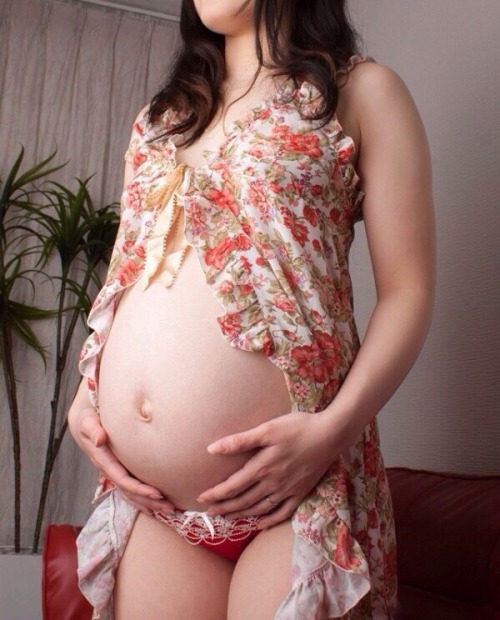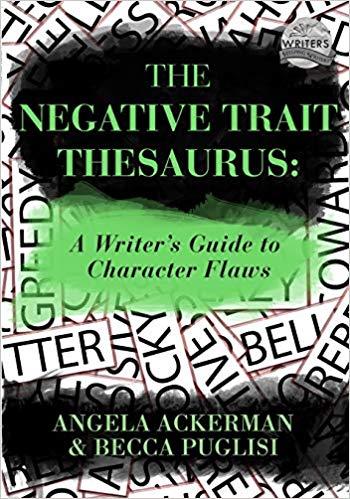#resource books
Ok, my
writeblr buds, I’m gonnarec some books for anyone trying to figure out the wholewordy thing. These are on my shelf and I love them. Super useful, very well organised and legit my favourite physical resource for descriptive purposes. The examples I’m including are short versions because each one covers two pages, so you definitely get your money’s worth. I paid just under £50 for the entire set, which I bought individually by shopping around. There’s also a companion booklet that goes with the Emotion Thesaurus that I don’t have that includes more information the authors put together after publication. These books work in tandem with each other, so you can use the information from one in another. They also reference other pages in themselves to help you even more. Ido recommend having the set, but it depends what kind of writer you are. If you’re weakin character creation then the positive and negative traits are for you. If getting emotions across is your stickingpoint then go for the emotion and emotional wound thesauruses. The two location helpers are great all round and really help spark ideas for when you know how a place looks but you can’t get the right words out to describe it. Anyway, to the examples! This is a long post, sorry in advance.
- THE EMOTION THESAURUS
Ever struggled for more than just another word for how someone feels? Yeah, we all been there. This book contains not just a list of emotions, but offers a definition, physical signs, internal sensations, mental responses, cues of acute orlong term effects of that emotion, connections to other emotions resulting from the emotion you’re looking up, cues of suppressed emotion and a handy tip.
EX:GRATITUDE—Thankfulness, feeling grateful or appreciative.
Physical signs.
Eyes that are soft, filled with an inner glow.
Clasping another’s forearm or hand.
Tapping a loose fist against the heart.
Internal sensations.
Tingling warmth in the limbs.
A release of all bodily tension.
A feeling of expansion in the chest.
Mental responses.
Desiring to repay another’s kindness and support.
Feeling overwhelmed in a good way.
Wanting to drinkin the moment , to remember this feeling forever.
Cues of acute orlong term gratitude.
Worship.
Falling to one’s knees.
Joyful tears.
May escalate to:
SATISFACTION.
PEACEFULNESS.
HAPPINESS.
Cues of suppressed gratitude.
Closing the eyes.
Ducking one’s head to hide one’s expression.
Avoiding eye contact.- THE EMOTIONAL WOUND THESAURUS
Honestly, of the set this one is my favourite. It has a very comprehensive list of differenttypes of trauma and it’s nicely set out into different categories with detailed information in each section.
EX:MISPLACED LOYALTY
Examples:
Learning one was a pawn for others.
Being used by a love interest.
Being thrown under the bus by a family member.
Basic needs often compromised by this wound:
Love and belonging. Esteem and recognition.
False beliefs that couldbe embraced .
I can’t trust my own instincts.
I’m so gullible; I believe anything anyone says.No one can be trusted .
The character may fear:
Intimacy with others
Sharing personal information.
Being betrayed by a loved one.Possible responses and results.
Negative self-talk
Withdrawing from others
Becoming disloyal
Personality traits that may form.
Attributes: Analytical, appreciative, bold, cautious.
Flaws: Apathetic, antisocial, callous, catty.
Triggers that might aggravate this wound:
Suspecting that someone is being used by others.
Not knowing ifa friend can be trusted .
Catching a friend in a lie.
Opportunities to face or overcome this wound:
Finding one is guilty of betraying the trust of others.
Being given a chance to join a group instead of living on the fringes of a community.
Making oneself vulnerable again by offering support.- THE POSITIVE TRAIT THESAURUS.
Now, I know for a fact there’s so many of us who struggle with character creation and how to develop ouroc ’s personality, so this is a godsend! It’s also handy if you’re already confident about who your characters are, but want to broaden their personality traits. I’d recommend using this one alongside the negative personality trait to build a balanced character.
EX:DISCIPLINED—Exhibiting willpower and self-control.
Categories:Achievement, identity.
Similar attributes:Self-controlled.Possible causes :Being strongly dedicated to a goal of belief. Being raised in a devout household.Participating in competitive sports.
Associated behaviours: Adhering to long-term routines or patterns.Making sacrifices to achieve one’s goals.
Having a strong moral barometer.
Associated thoughts: “I’d like to go out, but I need to get to bed early so I’m ready for tomorrow.”, “If I save up my tips for the next three months, I can take that trip to Mexico.”
Associated emotions: Confidence, desire, determination. (This is where the emotion thesaurus comes in handy)
Positive aspects: Disciplined charactersare focused and determined with concrete goals. They’re strong planners, choosing the best and most direct course of actionin order to achieve a desired result.
Negative Aspects: Disciplined characters are sometimes so focused on what theywant that they marginalise friends and loved ones.
Example from film: He may not be the smartest guy on the block, but Rocky Balboa hasstrength of willwhen it comes to training.
Traits in supporting characters that may cause conflict: Dependent, gentle, influential, innocent, manipulative.
Challenging scenarios for the disciplined character: Remaining disciplined during times of doubt and insecurity.
Facing a temptationthat is as tantalising as one’s original goal.
Having an identity crisis that forces one to reevaluate the current path.- THE NEGATIVE TRAIT THESAURUS
This goes great alongside the positive trait thesaurus if you struggle with creating characters. There’s every negative personality trait you can think of, with examples and how it affects the character. It’ll also link positive traits and emotions andpossible wounds caused by negative personality traits, so these four books I’ve mentionedreally work as a set and reference each other, which makes things a lot easier.
EX:MACHO—Aggressively pride in one’s manly qualities, including a belief in one’s right to dominate.
Similar flaws: Virile.Possible causes :Being raised in a tradition people with traditional ideas.
A fear of being perceived as feminine or unmanly.
A history of being bullied.
Associated behaviours and attitudes: Obsessively working out.
Aggression.
Bullying others.
Steroid use.
Refusing to do “womens’ work”.
Domestic abuse.
Associated thoughts: “As a matter of fact, I am god’s gift to women.”, “The house better be clean when I get home or Amy’s gonna be sorry.”
Associated emotions: Confidence, envy, insecurity, pride.
Positive aspects: Many macho characters see nothing wrong with acting the way they do. Somewhere, they’ve seen or heard this is the way real men behave and they’re trying to live up to this standard.
Negative aspects: Macho characters are offensive ona number of levels. Their proprietary attitudes towards women stem from the belief that women are frail beings who need someone to take care of them.
Example from film: Gaston from Beauty and the Beast.
Overcoming this trait as a major flaw: Machismo is simple masculinity taken too far, usually out of a need to prove something. This character will need to recalibrate his idea of manliness—possibly through a positive role model who refuses to accept their behaviour.
Traits in supporting characters that may cause conflict: Nagging, cocky, confrontational, controlling.- THE URBAN SETTING THESAURUS
I know I’m not alone when I can’t think of how to word what a place looks like. This is here to save you! Lots of lovely descriptive sentences that invoke imagery you can build on for your setting. You get your five senses laid out, along with examples of thetype of people found in the location and related settings to link the location with.There’s also some factual notes that will help you research your location further.
EX:SUBWAY TUNNEL
Sights: Bars of blue-tinged light spaced out along the track, darkness, concrete walls, graffiti, a narrow ledge along one or both walls, pipes running horizontally along the walls, motion sensors, track lines.
Sounds: The rattle androar of a passing train, brakes screeching as a high-speed train hits a sharp corner, water dropping, the hum of live tracks, rats squeaking and scrabbling over concrete.
Smells: Dust, urine, cold concrete, stagnant water.
Tastes: Some settings have no specific tastes associated with them beyond what the character might bring into the scene.
Textures and sensations: Being buffeted by the wind from a passing train, cold concrete under one’s hand, rough concrete catching on clothing as one slides along the wall, grit and sand scraping one’s skin when a train goes by, debris crunching under one’s shoes.
People commonly found here: Homeless people, subway work crews.
Related settings that may tie in with this one: Sewers, Subway train (this is where it gives another page number in this book)
Setting notes and tips: While subways tunnels are off limits to the public, people can get into them if they’re determined enough.
Setting description example: Martin’s footsteps echoed in the damp air and a steady breeze blew through his work shirt, chilling his skin.- THE RURAL SETTING THESAURUS
Last one, and it’s the opposite of the urban setting, so it covers all yournaturey places, schools, home and anything found outside of a city.
EX:TREE HOUSE
Sights:A rope ladder or boards nailed to the tree trunk to form a ladder, a trapdoor, wooden planks, acut out window , cloth nailed over the window to make curtains.
Sounds: The squeak of floorboards, the rope ladder scraping against the tree trunk, wind in the leaves, branches creaking and scraping against the roof.
Smells: Flowers, fresh-mown grass, new wooden planks, sawdust, rain, clean air, tree sap.
Tastes: Water, soda, juice, chocolate, candy, chips.
Textures and sensations: Rough wooden planks, nail heads sticking out of boards, cool air slipping through the gaps in the floorboards, the tree house swaying in the wind.Possible sources of conflict: The tree house falling downdue to poor workmanship.
Being found by someone one is trying to avoid.
Wasps building a nest inside the tree house.
Bedbugs and mouldy furniture.
People commonly found here: Kids, neighbours, siblings.
Related settings that may tie in with this one: Backyard. (another page reference is given here )
Setting notes and tips: Tree houses are a kind of rite of passage among many youngsters. Whilethe traditional tree house is constructed of rough materials, today’s hideout can alsobe bought prefabricated, complete with glass windows, decks, awnings, slides and many other features.
Setting description example: I looked up to what everyone was doing. Nora was polishing the rocks she’d collected at the creek and lining them up on the narrow shelf above the window.You can purchase these books on
Ebay —which is where I bought most of mine—but I recommend doing a search to get the best deal. Somedo cost more than others. They’re all round about the same thickness, so the page count is even throughout, so don’t let that dictate book costs.
Post link






